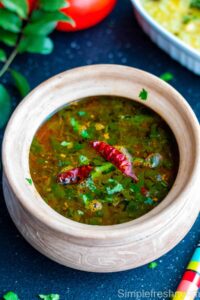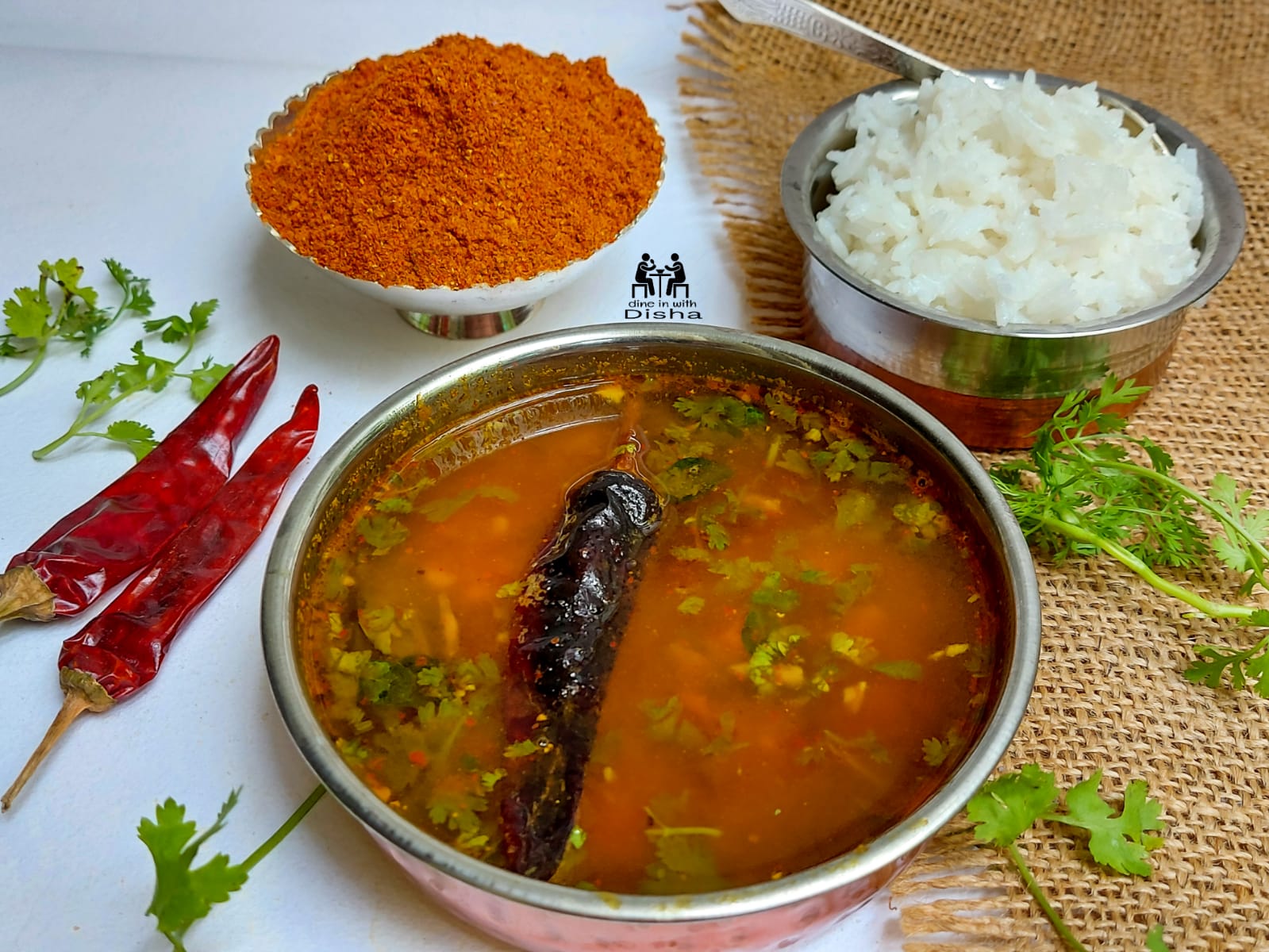Take a culinary journey with our traditional South Indian Rasam recipe, a heartwarming dish rooted in history and rich with flavor. Rasam is a traditional South Indian dish known for its aromatic blend of spices and sour tamarind base. This simple yet delectable soup not only tantalizes the taste buds, but it also has cultural importance, since it is frequently offered as a soothing cold treatment or as a daily staple.
History of Rasam:
Rasam is rooted in South India’s rich cultural fabric and has a centuries-long history. Originally known as ‘Rasavangi’ in Tamil, this meal appears in ancient Indian writings for its therapeutic benefits. Rasam was traditionally thought to be a cure-all due to its immune-boosting constituents, which included pepper, cumin, and tamarind. Over time, it evolved into a popular everyday dish enjoyed throughout the region, with each home contributing its own twist to the recipe.

Rasam Recipe:
Rasam
Equipment
- Heavy-bottomedsaucepan2. 3.4.5. 6.
- Cutting board
- Knife
- Ladle
- Mixing bowls
- Mortar and pestle (optional)
Ingredients
- For Rasam Powder:
- 2 tablespoons coriander seeds
- 1 tablespoon cumin seeds
- 1 tablespoon black peppercorns
- 4-5 dried red chilies
- 1 teaspoon mustard seeds
- 1/2 teaspoon fenugreek seeds
- 1 tablespoon toor dal split pigeon peas
- For Rasam:
- 1 cup tamarind extract soak a small lemon-sized ball of tamarind in warm water
- 3 ripe tomatoes chopped
- 1/2 cup cooked and mashed pigeon peas toor dal
- 1 teaspoon turmeric powder
- 1 tablespoon ghee clarified butter
- 1/2 teaspoon mustard seeds
- 1/2 teaspoon cumin seeds
- A pinch of asafoetida hing
- 2-3 dry red chilies broken
- A few curry leaves
- Salt to taste
- Chopped fresh coriander leaves for garnish
Notes
Step-by-Step Cooking Instructions:
Step 1: Make Rasam Powder - Dry roast coriander seeds, cumin seeds, black peppercorns, dried red chilies, mustard seeds, fenugreek seeds, and toor dal until aromatic. - Allow the mixture to cool before grinding it into a fine powder with a mortar and pestle or a spice grinder. Step 2: Tamarind Extract - Soak a lemon-sized tamarind ball in warm water for 15 minutes. - Extract the juice and leave aside. Step 3: Cook Pigeon Peas (Toor Dal) - Pressure cook toor dal till soft, then mash thoroughly. Step 4: Rasam Base - Combine tamarind extract, tomatoes, toor dal, turmeric powder, and freshly ground rasam powder in a heavy-bottomed saucepan. Bring to a slow boil, making sure the tomatoes are thoroughly cooked. Step 5: Tempering (Tadka): -In a separate pan, heat ghee and add mustard seeds. When they begin to sputter, add the cumin seeds, asafoetida, broken red chilies, and curry leaves. - Pour the tempering over the rasam base and cook for a few more minutes. Step 6: Season to taste. Adjust consistency with water if necessary. Step 7: Garnish and Serve: -Add freshly chopped coriander leaves. - Serve hot Rasam over steamed rice or as a warming soup on its own.Conclusion
Real Rasam dish captures the classic flavors of South Indian food. As you sip each spoonful of this delicious soup, you are not only experiencing years of culinary excellence, but also connecting with the rich cultural legacy that has made Rasam a beloved ritual in households around the world. Bring the warmth of South India to your table and make long-lasting memories with this delectable trip through history and taste.
Read Also: 10 Amazing Winter Dishes To Keep You Warm In India
Read Also:- The Top 7 Most Common North Indian Delicacies: A Flavorful Odyssey
Learn More about the vast Indian Foods here: TASTEOFINDIAAA…





